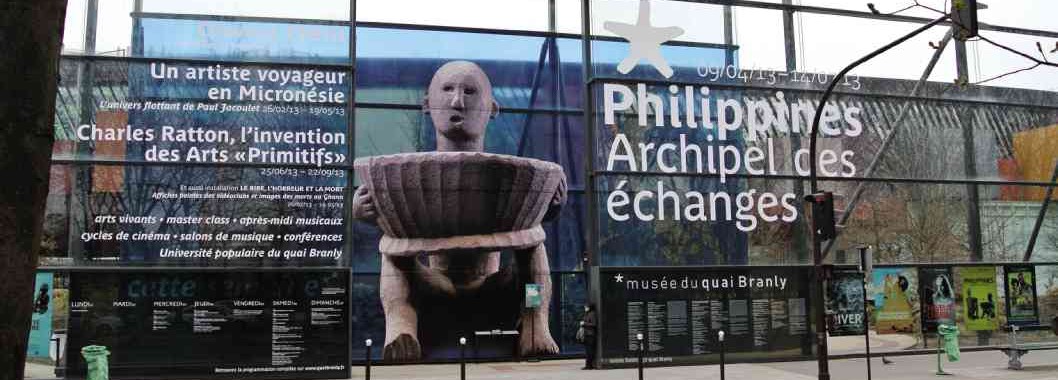
exhibition at the Musée du Quai Branly in Paris.
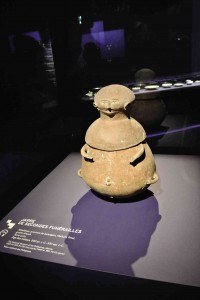
Prime Minister Jean-Marc Ayrault of France and Vice President Jejomar Binay of the Philippines inaugurated the exhibit “Philippines: Archipel des Échanges (Philippines: Archipelago of Exchange)” last April 8 at the Musée du Quai Branly in Paris.
Philippine Ambassador to France Cristina Ortega also helped open the exhibit.
The exhibition is probably the most substantial and exhaustive exhibition of Philippine pre-Hispanic artifacts since “The People and Art of the Philippines” by Richard Ellis, Fr. Gabriel Casal, Regalado Trota José and Eric Casiño, that was shown in Hawaii and California in the late 1970s.
Covering an enclosed area of 2,000 sq m at the prestigious Musée du Quai Branly, the landmark exhibition brings together outstanding Philippine pre-Hispanic artifacts and indigenous art carefully chosen from the collections of the National Museum of the Philippines, Ayala Museum and Bangko Central ng Pilipinas.

Many of the objects on view are from the collection of the Musée du Quai Branly, complemented by pieces from the Leiden Museum of Ethnology (Netherlands); Museum fur Volkenkunde (Vienna, Austria); the Museo Nacional de Antropologia (Madrid, Spain); American Museum of Natural History (New York City, USA); and the Field Museum of Natural History (Chicago, USA).
Adding to the global significance of the exhibit is the presence of remarkable objects on loan from important private collections in the Philippines, France, and the United States.
Rare opportunity
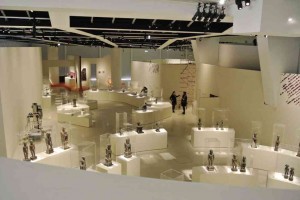
Most of the exhibition pieces have been out of public view for over a century, hidden either in museum storage facilities or in private collections, making this special gathering of artworks a rare opportunity to view exceptional objects and artifacts that illustrate Philippine cultural tradition that demonstrate the high level of Philippine culture as expressed in the superlative quality of craftsmanship so obvious in pre-Hispanic craft.
The exhibit opens with a collection of traditional wooden Cordillera objects, carved bowls and spoons used for daily life, bulul rice gods, ritual boxes, and other ceremonial objects, especially a grand hagabi, a long ceremonial bench carved from a single tree, that was purposely brought from the Philippines.
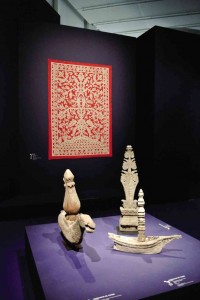
Completing the story of Cordillera life are objects that illustrate different facets of life, weavings, antique gold and silver jewelry, groupings of centuries-old weaponry, and Chinese ceramic jars that are evidence of trading activities that existed between the early Philippines and its neighboring countries.
Trade is the key concept of the exhibition. Its very name, “Philippines: Archipel des Échanges” (Philippines: Archipelago of Exchange), brings forth the reality that the Philippines was in the midst of a sphere of exchange of ideas and influences brought about by its vigorous marine trade with countries in the region through the centuries.
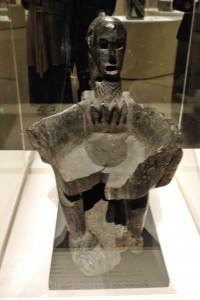
The 11th-century balanghai boats excavated in the marshes of Butuan are a testimony to early maritime skill that made extensive trade possible. The wooden boats, some over nine meters long, were navigated along seasonal sea currents by sailors who marked their positions by the stars above.
Gold jewelry
Further illustrating early Filipino relationship with nature, the collection of gold jewelry is exhibited as stars marking the constellation that exists in the Philippine skies.
So obvious is Philippine excellence in the finely wrought 10th-century gold jewelry found throughout the country, especially in the Visayas and neighboring northern Mindanao area, particularly the Agusan River delta.
Paper-thin sheets of gold crafted into a range of objects, jewelry, small statues and death masks, patterned with repoussé work of the finest quality illustrate the highest level of pre-Hispanic craftsmanship.
Fine weaving, brasswork and woodcarving represent the Mindanao area. Notable are the 19th-century panolong from the National Museum that is intricately carved wing-like architectural details that jut out of the torogan, the long wooden houses occupied by Maranao nobility.
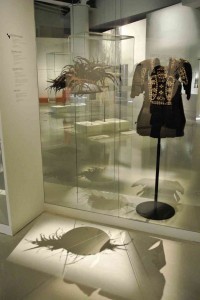
Most outstanding is a richly polychromed, winged wooden buraq, half-man and horse, lent by the Asian Civilization Museum of Singapore.
On display is the original Boxer Codex (c. 1595), loaned by the Lilly Library of the University of Indiana in Bloomington, IN, USA.
Each object on view is a work of tribal genius, the absolute best of its genre, and totally without comparison. The exhibition design, spare and simple, focuses attention on individual objects.
Always global

When viewed as an ensemble, all objects illustrate the high standards of excellence, the skill and singular view of the early Filipino craftsman, and how exchange with other cultures in the region enriched and brought the world view to Filipino outlook.
The story of the Philippines is writ large by this exhibition. However, the story of the Philippines, as the exhibition so rightly points out, is so rich and complex that “Philippines: Archipel des Échanges,” comprehensive and excellent as it is, opens eyes to the other facets of Philippine culture that this exhibition could not encompass.
What the exhibition does successfully is show that the Filipino evolved his own individual culture and lifestyle before the arrival of the Spanish conquistadores, and shows that, through our trade contacts with neighbors across the seas, we were always global.
Curated by Constance de Monbrison, collections manager of the Musée du Quai Branly, this project’s gestation period was long. First conceived during the term of the late museum director Fr. Gabriel Casal and carried over by his successor Corazón Alvina, culmination of the project is under the present museum director Jeremy Barns and the National Museum team that made this effort possible.
Having been able to experience this exhibition is a once-in-a-lifetime event. Gratitude is due to those involved in this momentous undertaking.
“Philippines, Archipel des Échanges” runs until July 2013. If you plan to be in Paris, don’t miss it. Better still, plan to be in Paris to see it.

